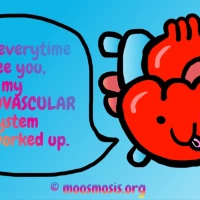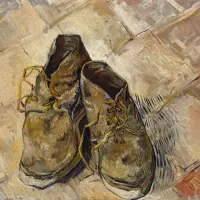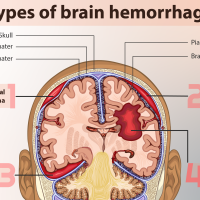The recent COVID-19 pandemic has turned our world upside down. From the way we greet each other to the schedule of our daily routines, it’s safe to say that everything that was considered the norm at the beginning of 2020 has completely changed.
While most people’s eyes are on health officials, tech giants and start-up companies have been using this time to create new inventions to propel society further – or so they say. Here we will analyze the new products and tech trends that have arisen in the wake of this pandemic, what they do, and if they actually serve to help society.
Virus-Tracking Apps
The rise of the coronavirus has healthcare workers looking for new ways to slow its spread and prevent future cases. Tech giants such as Apple and Google have pledged to create a virus-tracking system that will use Bluetooth to essentially notify the people around you if someone nearby has the coronavirus. People with any type of phone could download an app, indicate if they have been contracted with the virus, and the app would notify others if they’re close to someone with it.
Virus-tracking apps are supposedly able to help health-officials slow the spread of the virus. However, it renders useless unless people around the world are given proper coronavirus testing. It has also been revealed that these tech companies won’t disclose the app’s information with health officials in an effort to keep private information out of government reach. That means the number of people infected and where they are being infected won’t be shared, leaving many users’ locations in the hands of tech companies.
This fact is disturbing to many people, such as Cornell University information science professor Helen Nissenbaum, who finds it ironic that tech giants, who have a vast array of the public’s data, are resistant to sharing their findings with healthcare workers who will actually put the information to use.

Virtual Care
Virtual care is the best way for healthcare workers to communicate with patients while still social distancing. Virtual care, or “telehealth”, is the use of electronics and technology to provide care for patients while being apart. The most popular way people are using tech during this pandemic to extend care is through video chats, which are live between the doctor and the patient. Others are through messaging or remote patient monitoring. For example, tele-ICU, or eICU, allows critical care nurses to remotely monitor a patient with surveillance cameras.
Virtual care during this time period is incredibly useful for patients. Understandably, many people are feeling added stress to their everyday lives, so being able to talk to a health professional is very helpful for one’s mental health. Virtual care can also help patients who may believe they’ve contracted the coronavirus and need to speak with a healthcare professional for a second opinion before receiving in-person care. Advancements in virtual care during this pandemic have a great chance of being further implemented into our lives in the future as well.
Rise of Online Shopping
With most people stuck at home in quarantine, there has been a significant rise in online shopping across the world. Online shopping and online orders have become a necessity, as going outside is a risk for non-essential workers. Many businesses in the U.S. and China have even started sending robots to deliver food to people to decrease social contact. There has been a rise in purchases on sanitization products and masks; about 12 million face masks were sold in the month of April 2020.
Online shopping has already been a norm in society, but the rise of this pandemic has only heightened the necessity of online shopping. For instance, grocery stores around the U.S. have increased their online presence to accommodate for the large number of people looking to order online.
3D Printing
3D printing technology has become a popular way to make face masks less painful for people to wear. Chinese 3D-printer manufacturer Creality started making buckles in February 2020. These buckles have bars on either side and hold the elastic on face masks so it’s behind the wearer’s head, making the mask less painful on the wearer’s ears.
Healthcare workers around the world have to wear masks and PPE (Personal Protective Equipment) for long hours. Viral photos online of medical workers’ cuts from masks inspired Creality to create these buckles and donate them to local hospitals. They’ve even made their design available to download so people with 3D printers can create buckles themselves.

Designs like these buckles have helped those in the medical field focus their attention on their patients and less on painful face masks. Other 3D printing companies across the globe have helped healthcare workers by making valves for ventilators, creating face shields for healthcare workers, and making door handles that can be opened with your elbow instead of your hand.
The recent COVID-19 pandemic has shown what many tech companies are willing to do in the face of uncertainty. It’s important to look at how tech companies are using their resources to help others and to research if what they’re doing actually helps the public.
Works Cited
HIMSS Media. “Roundup: Tech’s Role in Tracking, Testing, Treating COVID-19.” MobiHealthNews, 14 May 2020, http://www.mobihealthnews.com/news/roundup-techs-role-tracking-testing-treating-covid-19.
Harwell, Drew, and Reed Albergotti. “Apple and Google Are Building a Virus-Tracking System. Health Officials Say It Will Be Practically Useless.” The Washington Post, WP Company, 15 May 2020, http://www.washingtonpost.com/technology/2020/05/15/app-apple-google-virus/.
Xiao, Yan, and Ziyang Fan. “10 Tech Trends Getting Us through the COVID-19 Pandemic.” World Economic Forum, 27 Apr. 2020, http://www.weforum.org/agenda/2020/04/10-technology-trends-coronavirus-covid19-pandemic-robotics-telehealth/.
Harwell, Drew, and Tony Romm. “Apple, Google Debut Major Effort to Help People Track If They’ve Come in Contact with Coronavirus.” The Washington Post, WP Company, 10 Apr. 2020, http://www.washingtonpost.com/technology/2020/04/10/apple-google-tracking-coronavirus/.
“Understanding Telehealth.” Telehealth.HHS.gov, telehealth.hhs.gov/patients/understanding-telehealth/.
Kastrenakes, Jacob. “Etsy Sales Doubled in April Thanks to Homemade Masks.” The Verge, The Verge, 6 May 2020, http://www.theverge.com/2020/5/6/21249870/etsy-mask-sales-earnings-doubled-april-q1-2020-results.
Block, India. “Creality’s 3D-Printed Buckle Makes Wearing Face Masks More Comfortable.” Dezeen, 4 Apr. 2020, http://www.dezeen.com/2020/03/29/creality-3d-printed-buckle-face-mask-coronavirus/.
Click and check out these popular articles for more information: 🙂
Circulatory System: Blood Flow Pathway Through the Heart
Circulatory System: Heart Structures and Functions
Ductus Arteriosus Vs Ductus Venosus Vs Foramen Ovale: Fetal Heart Circulation
Cardiac Arrhythmias: Definition, Types, Symptoms, and Prevention
Upper Vs Lower Respiratory System: Upper vs Lower Respiratory Tract Infections
Seven General Functions of the Respiratory System
Digestive System Anatomy: Diagram, Organs, Structures, and Functions
Kidney Embryology & Development: Easy Lesson
Psychology 101: Crowd Psychology and The Theory of Gustave Le Bon
Introduction to Evolution: Charles Darwin and Alfred Russel Wallace
Copyright © 2022 Moosmosis Organization: All Rights Reserved
All rights reserved. This essay first published on moosmosis.org or any portion thereof may not be reproduced or used in any manner whatsoever
without the express written permission of the publisher at moosmosis.org.

Please Like and Subscribe to our Email List at moosmosis.org, Facebook, Twitter, Youtube to support our open-access youth education initiatives! 🙂
Categories: Economics, education, math, medicine, psychology, Social Studies, stem, technology














Interesting!
LikeLiked by 1 person
Tech is definitely on the rise. Great article
LikeLiked by 2 people